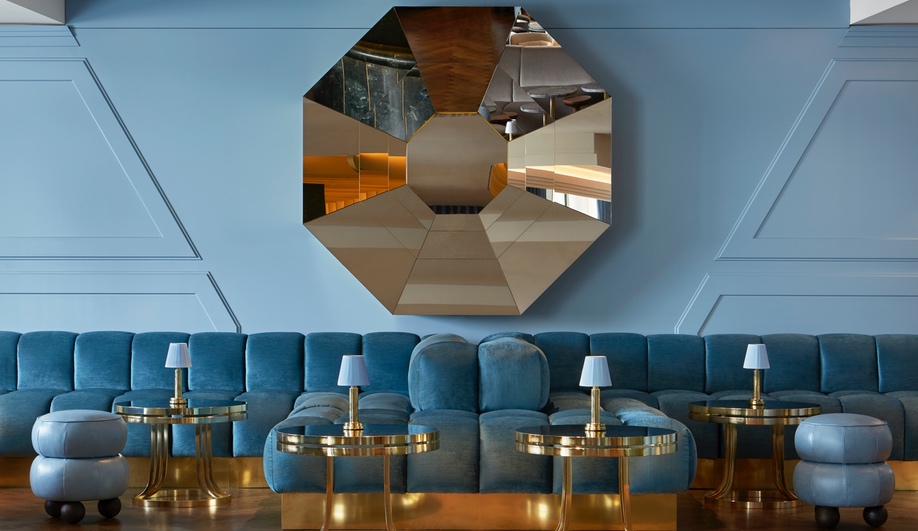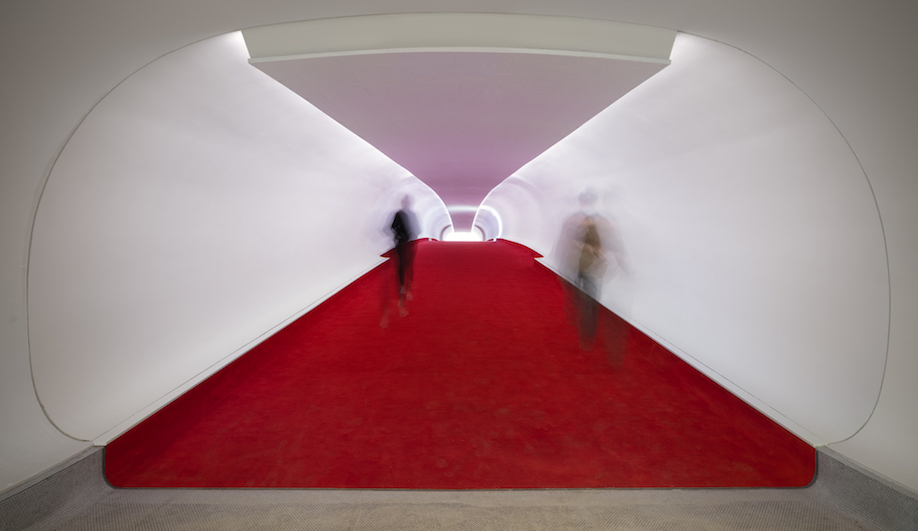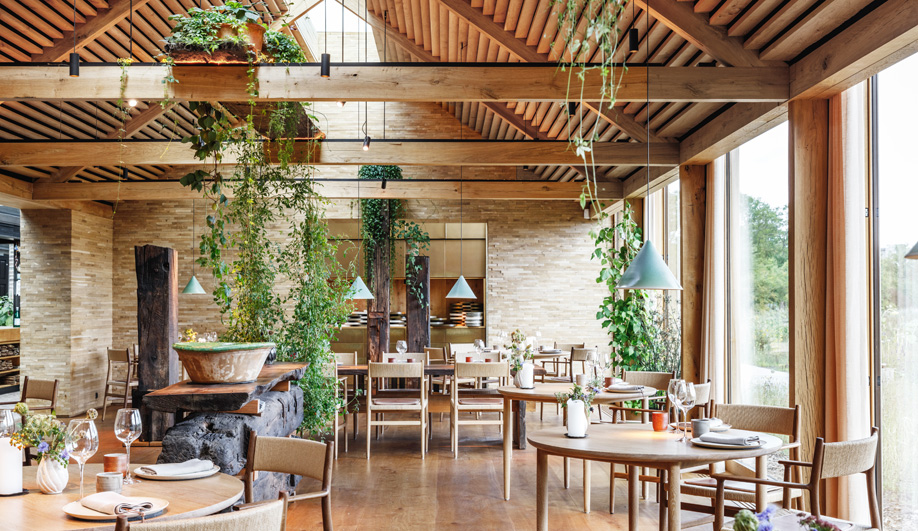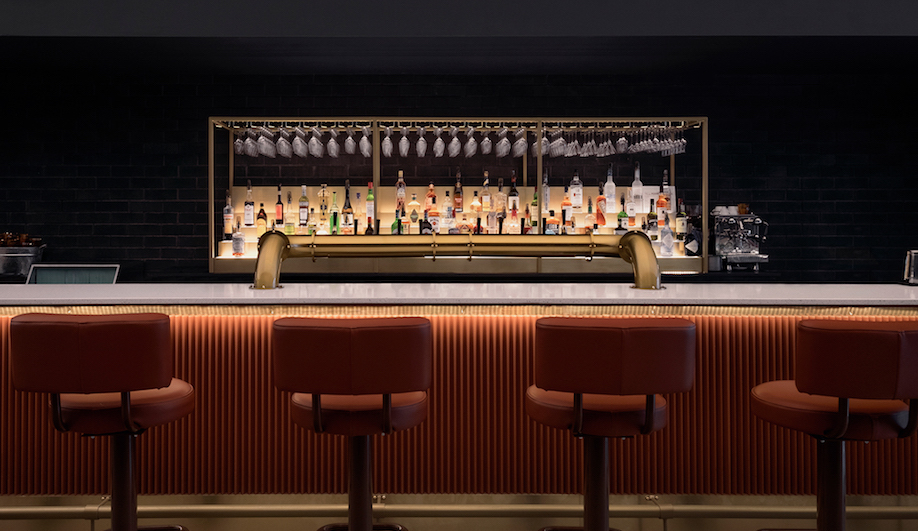
Defined by soaring ceilings, architectural lighting and its béton brut exterior, KAAN Architecten’s modernist Crematorium Siesegem is both grand and solemn. Yet it never hides its main function – or the humanity of its visitors.
The act of mourning is complicated. In processing death, there’s no wrong emotion: sadness, anger, guilt and relief are all common, and at funerals, those emotions take centre stage. That’s something that KAAN Architecten understands deeply; since its inception in 1987, the Netherlands-based interdisciplinary firm has completed a number of modernist crematoriums, becoming a specialist in the typology. Its latest, designed in tandem with landscape architect Erik Dhont, is Crematorium Siesegem, a solemnly beautiful complex at the edge of Aalst, Belgium.
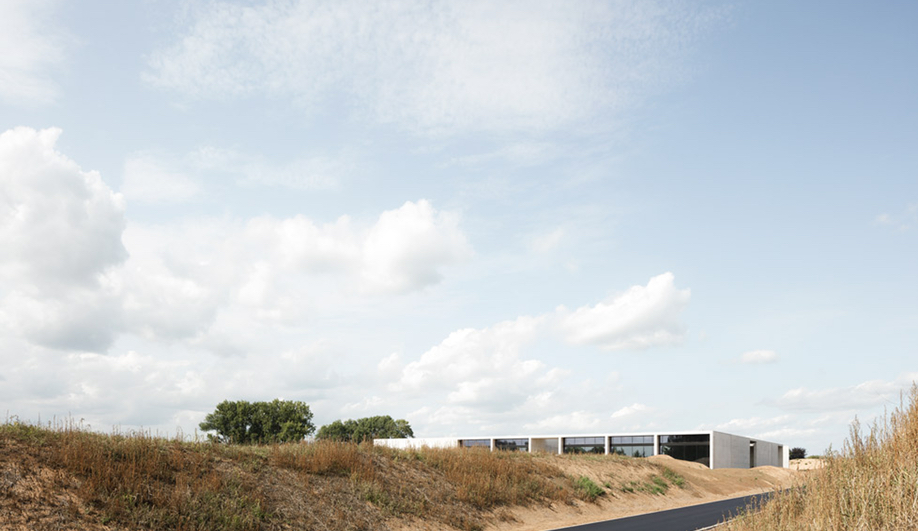
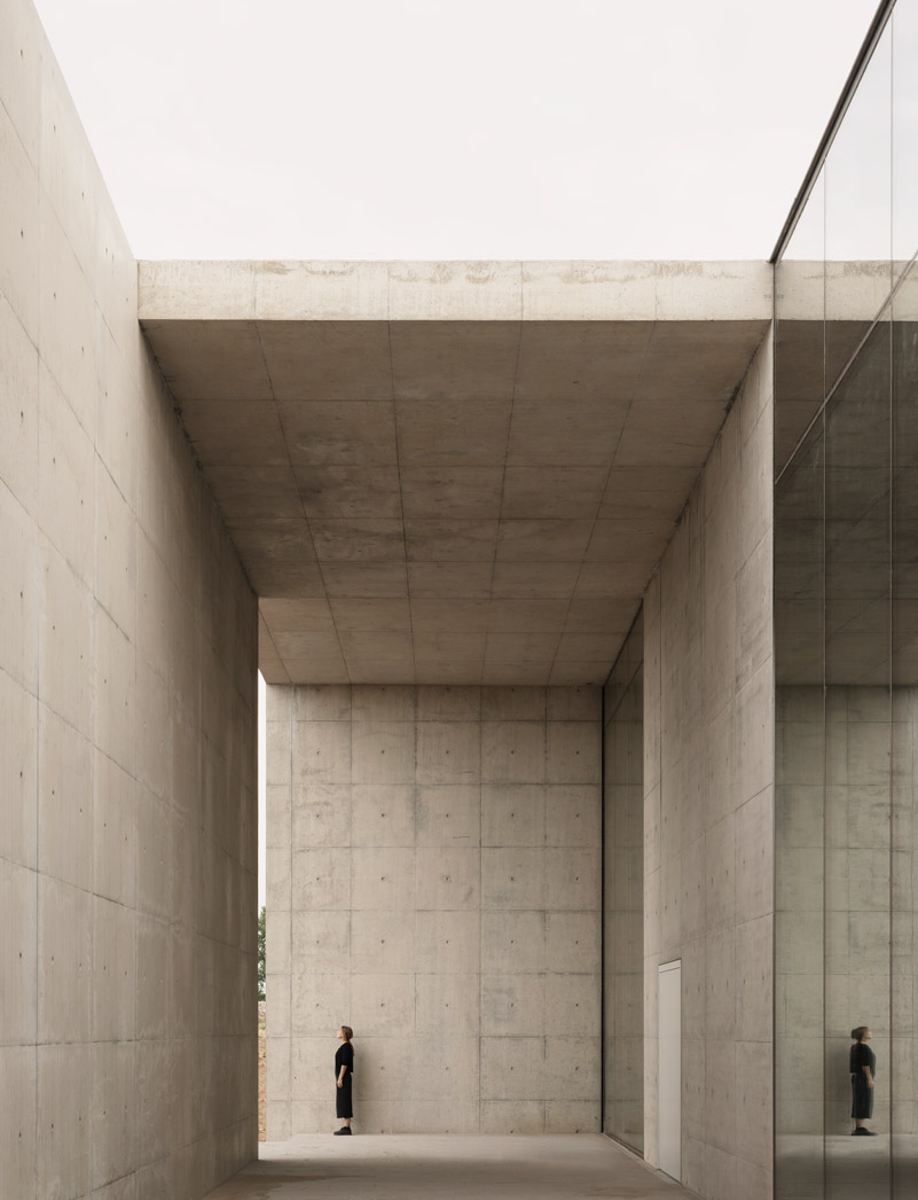
Crematorium Siesegen’s designers wanted to encourage contemplation among its visitors, and an introspective thread runs through the project’s every element. Before visitors arrive, a path winding around gently rolling green mounds encourages them to slow down and take in Dhont’s serene landscaping. The crematorium itself rises from a ring of shrubs and trees, a short distance away from a rainwater reservoir, gardens and hills, where ashes can be scattered.
Set on a 5,000-square-metre site, the béton brut complex – made up of two ceremony halls with adjoining family rooms, the larger of which can accommodate 600 people – is a blank expression forged from concrete and glass. With double-height ceilings rising 6.4 metres, the building is monolithic without, in the firm’s accurate words, “succumbing to pompous monumentalism.” KAAN designed a building that is gently intuitive, wherein “a sequence of shapes guide the visitor’s physical experience” with minimal signage.

A custom-made reception desk (below) is the first thing visitors encounter upon entering Crematorium Siesegem. The concrete ceiling and walls have a rough-sprayed finish to ensure a muted environment.
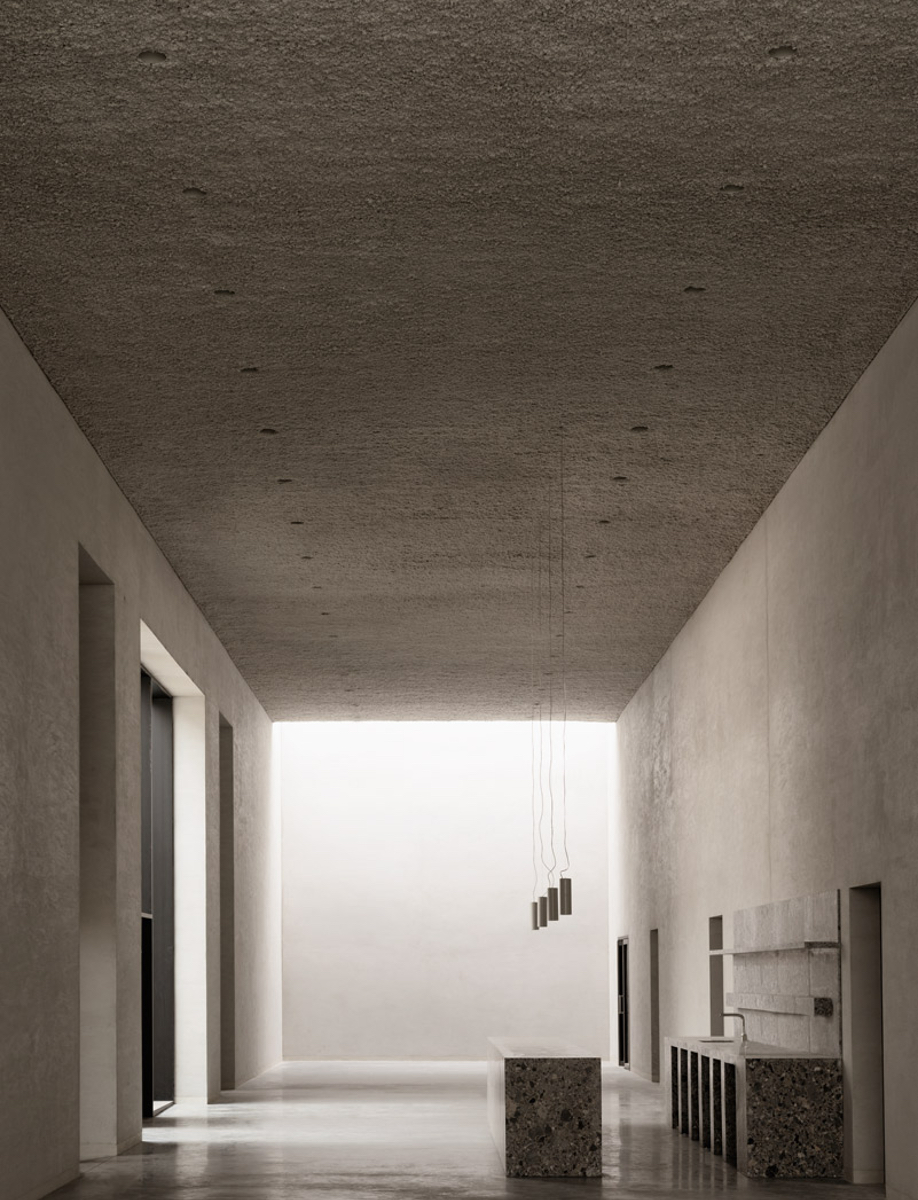
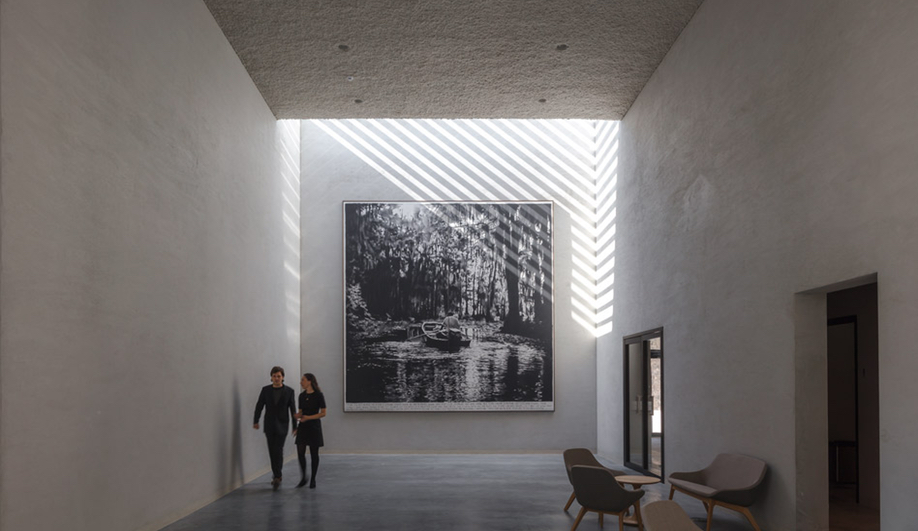
According to KAAN Architecten, crematoriums in Belgium play a special role in the mourning process: along with cremation itself, they’re places families gather to eat, connect and celebrate the departed. (It’s no stretch to imagine crematoriums becoming similarly important worldwide – cremation rates are rising globally, reaching nearly 50 per cent in the U.S.) Accordingly, the project needed to encourage users to linger, which the firm achieved through its restrained material and colour choices, allowing the architecture to recede into the background.
A yellow-beige hue is used on most upholstered items, a direct reference to sand and ashes. Along with concrete and glass, the architects also reinforced the complex’s neutral earthy palette with Ceppo di Gré marble. Giant 2.4 x 1 metre slabs cover select floors and walls, and the material is also used at the reception desk, the bar and the ceremony halls’ lectern.

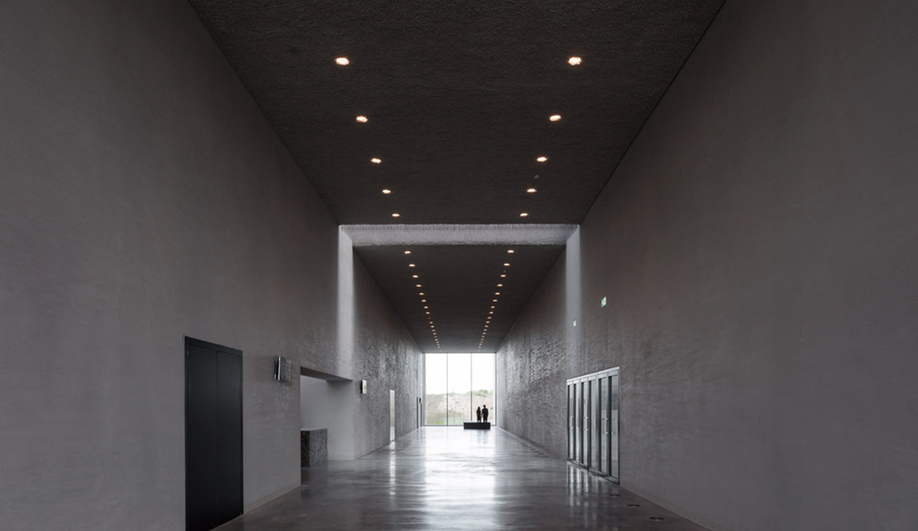
Natural lighting also plays a critical role – the strategic use of sunlight balances the solemn material choices. The hallways are treated to geometric splashes of architectural lighting, while floor-to-ceiling glazing connects visitors to nature in reception areas (as above) and in both ceremony halls.
As with many projects, those windows are intended to blur the line between the built environment and nature. But they’re also here to remind visitors, who peer out over grassy, bucolic East Flanders, that we’re never far from returning to the Earth. “Greenery,” says the firm, “links nature to daylight and offers a counterweight to the intensity and spirituality experienced by the bereaved.”
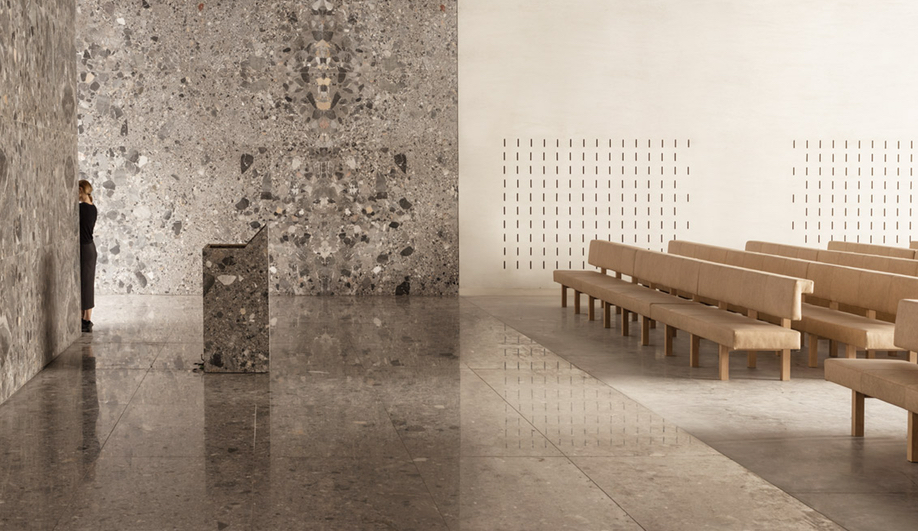

Discretion was important for Crematorium Siesegen, but transparency was also a priority. While hearses enter via a hidden service road, the production areas, located adjacent to the ceremony halls, are visible. The gurneys, cremators and chambers – which capture the gases emitted after a body is incinerated – are all visible and painted in sandy yellow to match the complex’s furniture. Chimneys protrude through a circular glazed opening, allowing a ring of sunlight to filter downwards.
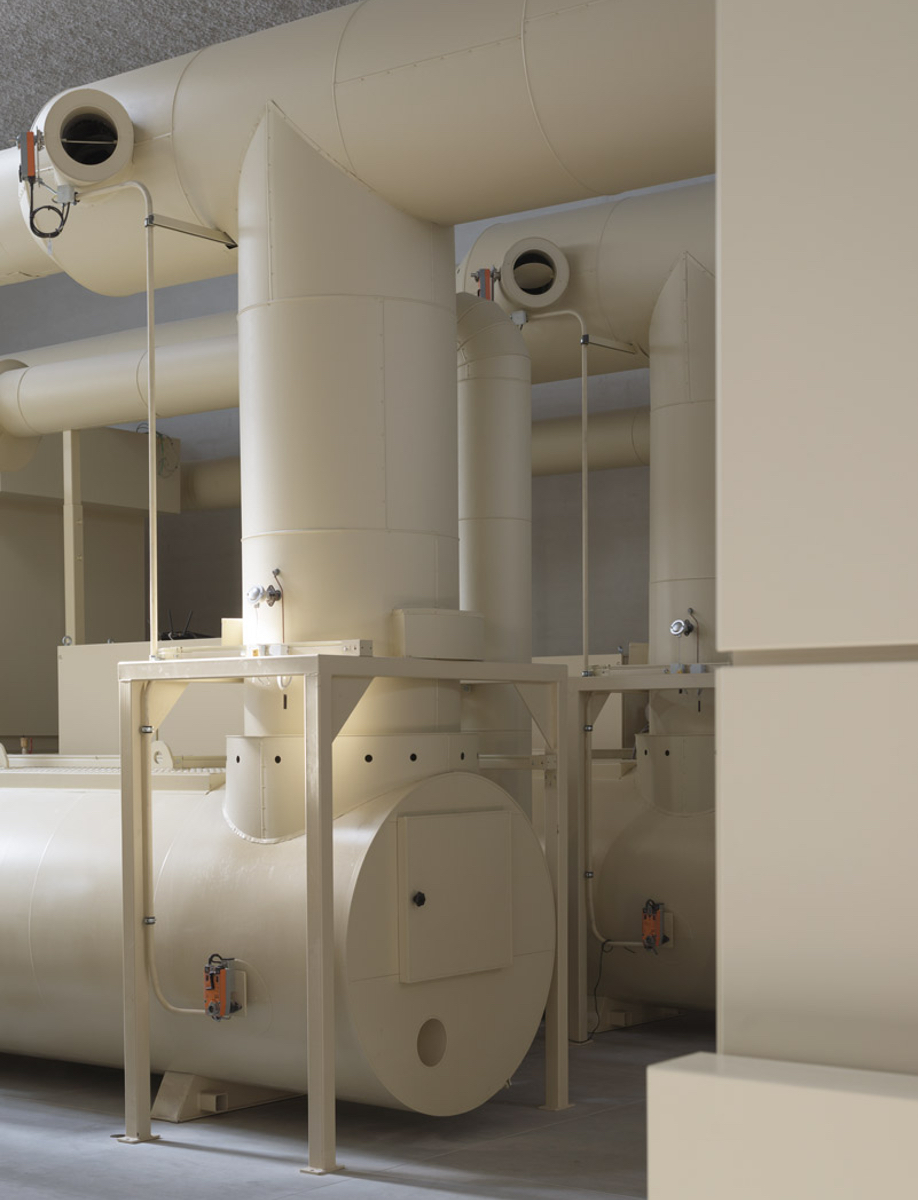

Together, these elements form a “peaceful oasis for reminiscence.” It’s a building grand enough to tackle life’s biggest questions, yet subtle enough to respect the mourning process.


